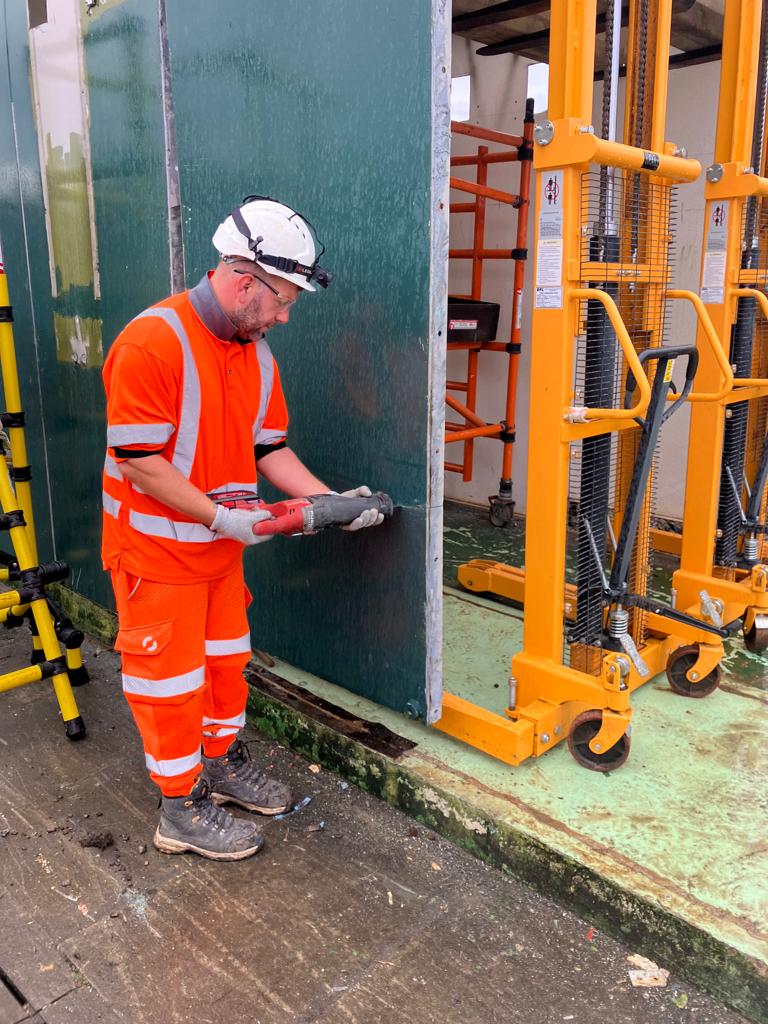Project Details
Client: Siemens (Working in partnership with A&M Electrical)
Project Name: East Coast Mainline PSU-Building Recoveries
Location: Across the East Coast Mainline route, from London to Edinburgh
Project Type: Demolition and Civils
Start Date: October 2023
Completion Date: November 2024 (Anticipated)

Project Description
The East Coast Mainline PSU – Building Recoveries project involves the demolition and recovery of old redundant substations along the East Coast Mainline route. This initiative is critical to making way for new substations and removing outdated buildings and equipment from Network Rail’s infrastructure. Mettal Infrastructure has been appointed to provide a comprehensive suite of services to ensure the project’s successful execution.
Scope of Work:
- Supply of Civils CRE: Mettal Infrastructure provided a Civils CRE (Contractor’s Responsible Engineer) to oversee the civil engineering aspects of the project.
- Construction and Site Management: The team was responsible for preparing all project and site documentation, ensuring thorough planning and execution.
- Temporary Works Supervisor: This role included overseeing the temporary works and authorizing the permits to load.
- Provision of Plant, Tools, and Resources: All necessary equipment and resources were supplied to carry out the building recoveries efficiently.
- Asbestos Specialist Collaboration: At the Potters Bar site, Mettal Infrastructure engaged with an asbestos specialist contractor to ensure safe handling and removal.
Project Execution:
- Site Surveys: Comprehensive surveys were conducted to identify the presence of asbestos and lead in the buildings. Specialists were brought in to handle hazardous materials safely.
- Design and Coordination: The Temporary Works Coordinator and designer worked closely with the CRE and Construction Manager to ensure practical and safe design implementation on site. Design review meetings and Interdisciplinary Coordination (IDC) sessions were attended to streamline the process.
- Building Removal: Following Safe Systems of Work (SSOW), Risk Assessment Method Statements (RAMs), and Temporary Works Design, the team undertook the building removal. All scrap materials were placed into Network Rail (NR) metal skips at each site.
Objectives and Benefits: The main goal of the project is to clear the site of old substations to make way for new infrastructure, enhancing the efficiency and safety of Network Rail’s operations. This project aligns with Network Rail’s broader power supply upgrade initiative.
Reason for Appointment: Mettal Infrastructure was selected due to our specialisation in high-risk works and extensive experience in managing similar projects. Our ability to deliver complex tasks safely and effectively made us the ideal choice for this significant undertaking.
Innovation: The project required significant stakeholder engagement, working in an alliance with multiple partners: Volker as the Principal Contractor, Murphy’s as the Temporary Works Designer, and Volker Rail managing the Temporary Works Coordinator role. The use of temporary works and staged work methods added a layer of complexity and innovation to the project.
Progress: To date, seven sites have been successfully completed, including Hutton Bonville, Colton Junction, Potters Bar, Chathill, Fenham, and York. The remaining sites (Coreys Mill, Balne, Chester-Le-Street, and King Edwards Bridge) are on track for timely completion.




